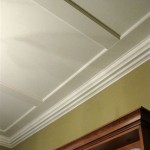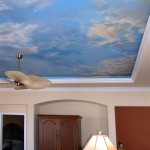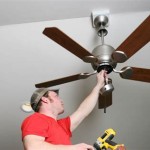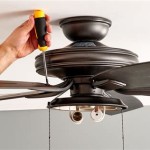How To Choose The Right Square Ceiling Light Covers
Square ceiling light covers serve both functional and aesthetic purposes. They diffuse light, protecting the bulb and the eye, and can significantly influence the room's overall ambiance. Choosing the right cover involves considering various factors, from material and size to light transmission and style. A well-chosen cover enhances the lighting efficiency and contributes to the intended design scheme of the space.
The selection process should begin with understanding the specific needs of the location where the light cover will be installed. Factors such as the room's size, existing décor, intended use, and the type of lighting fixture already in place will play crucial roles. Neglecting these considerations can result in a cover that either fails to provide adequate illumination or clashes with the room's aesthetic.
Understanding Material Options for Square Ceiling Light Covers
The material of a square ceiling light cover is a primary determinant of its durability, light diffusion properties, and overall cost. Common materials include acrylic, polycarbonate, glass, and less frequently, fabric or metal composites. Each material offers a unique set of advantages and disadvantages.
Acrylic, also known as Plexiglas, is a popular choice due to its light weight, shatter resistance, and relatively low cost. It diffuses light effectively, reducing glare and creating a softer, more even illumination. Acrylic is also available in various textures and colors, allowing for greater design flexibility. However, acrylic is susceptible to scratching and can yellow over time with prolonged exposure to ultraviolet light.
Polycarbonate is known for its superior impact resistance, making it a suitable option for high-traffic areas or environments where the cover is likely to be subjected to physical stress. It is also more resistant to yellowing than acrylic. Polycarbonate offers good light transmission and is available in clear, frosted, and tinted varieties. While it's more durable, polycarbonate tends to be more expensive than acrylic.
Glass offers a classic aesthetic and excellent light transmission. It is highly resistant to scratching and discoloration, maintaining its appearance over time. Glass covers can be clear, frosted, or textured to achieve different light diffusion effects. However, glass is heavier and more fragile than acrylic or polycarbonate, requiring careful handling during installation and replacement. The cost of glass covers is generally higher than acrylic or polycarbonate.
Fabric or metal composite covers are less common in standard ceiling light applications but are sometimes used for specific design purposes. Fabric covers are often used to create a soft, ambient light, while metal composite covers can provide a more industrial or modern look. These materials may require special cleaning and maintenance and may not offer the same level of light diffusion as acrylic, polycarbonate, or glass.
Considering Size and Dimensions for Proper Fit
Ensuring the correct size and dimensions of the square ceiling light cover is critical for both functionality and safety. An improperly sized cover may not fit securely, leading to potential hazards, or may not adequately diffuse the light, resulting in uneven illumination. Accurate measurements of the existing fixture are essential before purchasing a replacement cover.
The first step is to measure the length and width of the existing cover, or the opening where the cover will be installed. Measurements should be taken in inches or millimeters for precise accuracy. Confirm whether the measurements refer to the interior or exterior dimensions of the cover. Different manufacturers may specify dimensions differently, so it is essential to clarify this point.
Consider the depth or height of the cover. This dimension is particularly important if the cover needs to accommodate a specific type of bulb or lighting fixture. Insufficient depth can cause the bulb to protrude from the cover, creating glare and potentially damaging the bulb. Too much depth may result in a cover that looks disproportionate or interferes with other fixtures.
Check the mounting mechanism of the cover. Square ceiling light covers may be held in place by screws, clips, or other hardware. Ensure that the replacement cover is compatible with the existing mounting system. If the mounting system is damaged or missing, it may be necessary to replace it along with the cover.
If replacing an existing cover, it is helpful to note the model number or specifications of the original cover. This information can often be found on a label or marking on the cover itself. Providing this information to a lighting supplier can help ensure that the replacement cover is the correct size and specification.
Evaluating Light Transmission and Diffusion Properties
The light transmission and diffusion properties of a square ceiling light cover determine the quality and intensity of the light emitted into the room. Different materials and finishes affect how light passes through the cover, influencing the overall ambiance and functionality of the lighting.
Light transmission refers to the amount of light that passes through the cover. Clear materials, such as clear glass or acrylic, offer high light transmission, allowing the maximum amount of light to reach the room. Frosted or opaque materials reduce light transmission, creating a softer, more diffused light.
Diffusion refers to the scattering of light as it passes through the cover. A well-diffused light reduces glare and creates a more even illumination, minimizing shadows and hot spots. Materials with textured surfaces or coatings typically offer better light diffusion than smooth, clear materials.
The choice between high and low light transmission depends on the intended use of the room. In areas where bright, focused light is needed, such as a kitchen or office, a cover with high light transmission may be appropriate. In areas where a softer, more ambient light is desired, such as a bedroom or living room, a cover with lower light transmission and good diffusion may be preferred.
The color of the cover also affects light transmission and diffusion. White or off-white covers typically provide the most neutral light diffusion, while colored covers can alter the color of the light emitted into the room. Consider the existing décor and intended ambiance when choosing the color of the cover.
Examine the light output of the bulb or fixture itself. If the bulb emits a harsh or intense light, a cover with excellent diffusion properties is essential to soften the light and reduce glare. If the bulb emits a dim or weak light, a cover with high light transmission is needed to maximize the amount of light reaching the room.
Considering Style and Aesthetics for Cohesive Design
The style and aesthetics of a square ceiling light cover should complement the overall design scheme of the room. The cover is not merely a functional component but also a visible element that contributes to the room's aesthetic appeal. Choosing a cover that aligns with the existing décor enhances the room's overall harmony.
Consider the architectural style of the building and the existing décor of the room. A contemporary space may benefit from a sleek, minimalist cover, while a traditional space may require a more ornate or decorative cover. The color, texture, and shape of the cover should be consistent with the room's overall design theme.
Pay attention to the details of the cover, such as the edges, corners, and any decorative elements. A cover with clean, sharp edges may be suitable for a modern space, while a cover with rounded edges may be more appropriate for a softer, more traditional space. Decorative elements, such as patterns or textures, can add visual interest but should not overwhelm the room's overall design.
Coordinate the color of the cover with the other elements in the room, such as the walls, ceiling, and furniture. A neutral-colored cover, such as white or off-white, is a versatile option that can blend seamlessly with a variety of color schemes. However, a colored cover can be used to add a pop of color or create a focal point in the room.
Consider the scale of the cover in relation to the size of the room. A small cover may look insignificant in a large room, while a large cover may overwhelm a small room. Choose a cover that is proportional to the size of the room and the other fixtures and furnishings.
Think about the lighting effect that you want to achieve. A clear cover will provide a brighter, more direct light, while a frosted or textured cover will create a softer, more diffused light. The style of the cover can contribute to the overall ambiance of the room, whether it is bright and energetic or calm and relaxing.
Evaluating Safety and Compliance Standards
Safety and compliance with relevant standards are paramount when selecting a square ceiling light cover. The cover must be made of materials that are resistant to heat and fire, and it must be properly installed to prevent hazards. Adhering to safety standards protects both the occupants of the building and the structure itself.
Ensure that the cover is made of materials that are rated for use in lighting fixtures. These materials should be able to withstand the heat generated by the bulb or fixture without melting, deforming, or releasing harmful fumes. Check for certifications from recognized testing organizations, such as UL (Underwriters Laboratories) or CSA (Canadian Standards Association), which indicate that the cover has been tested and meets specific safety standards.
Verify that the cover is properly installed and secured. A loose or improperly installed cover can fall and cause injury or damage. Follow the manufacturer's instructions for installation and use appropriate hardware and tools. If unsure about the installation process, consult a qualified electrician.
Consider the flammability rating of the cover material. Some materials are more resistant to fire than others. Choose a cover with a high flammability rating, particularly in areas where fire safety is a concern, such as kitchens or basements. Check for fire-resistant coatings or treatments that can enhance the safety of the cover.
Be aware of any local building codes or regulations that may apply to lighting fixtures and covers. These codes may specify requirements for materials, installation, and maintenance. Comply with all applicable codes to ensure the safety and legality of the installation.
Regularly inspect the cover for signs of damage, such as cracks, chips, or discoloration. Replace the cover immediately if any damage is detected. Damaged covers can pose a safety hazard and may compromise the performance of the lighting fixture.

How To Choose The Right Size Lighting Fixture Lights Com

How To Choose The Right Size Lighting Fixture Lights Com

How To Choose The Right Size Lighting Fixture Lights Com

Choosing The Best Led Recessed Lighting What You Should Know Blog

Flush Mount And Semi Lighting Guide The Home Depot

Choosing The Best Led Recessed Lighting What You Should Know Blog

How To Choose The Right Size Lighting Fixture Lights Com

New Nos Vintage Square 11 White Ruffled Dot Ceiling Light Fixture Cover Shade

Vintage 13 Square Frosted Glass Ceiling Light Fixture Shade Replacement

How To Lay Out Recessed Lighting The Home Depot
Related Posts








